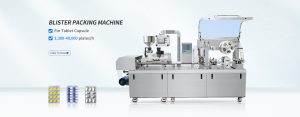Different features in the design of a pharmaceutical tablet press machine ensure that precision, efficiency, and reliability in tablet production are realized. These machines are also able to ensure high production capacity, where the advanced models have the capacity to make as many as 300,000 tablets per hour, something really important in large-scale pharmaceutical manufacturing. For instance, rotary tablet presses use multiple compression stations to achieve such high outputs, hence rapid production with no compromise on tablet uniformity.
Also critical in this regard is dosage accuracy, with top machines able to ensure around 99.9% dosage accuracy in the weight of each tablet. This ultimately means not just that dosage variations are pretty negligible, but also that such precision can usually meet demanding regulatory standards. Adjustable fill cams and pre-compression mechanisms, which are standard in leading brands like Fette and Korsch, maintain precision. These help operators make fine adjustments of compression and fill parameters, ensuring that maintaining consistent product quality across large batches is relatively easy.
Other important options involve tablet shape, size, and weight. Most pharmaceutical tablet presses are designed with interchangeable tooling sets that allow the production of different shapes and dosages all within one machine. In the manufacturing of multi-layer or coated tablets-a common dosage form in controlled-release medications-this would become highly valued. For example, the Courtoy R Series provides for complex shapes and sizes, making this range particularly fit for those manufacturers that have to offer a wide flexibility in tablet design.

Features like cleaning-in-place and lubrication systems contribute to better operational efficiency due to reduced downtime. For example, the CIP system alone could save up to 50% in cleaning time, thus allowing easy transitions from batch to batch with no sacrifice in sterility. Automation minimizes labor costs since operators invest less time in manual cleaning and maintenance tasks. For instance, the Kikusui Libra series features both CIP and auto-lubrication for extended operating time and continuous high-volume throughput.
Other requirements include safety and ease of control. Many modern pharmaceutical tablet presses have touchscreen control panels that deliver immediate production information, like compression force, fill depth, and count of tablets produced. These kinds of control panels make operation more straightforward by enabling the operator to speedily alter some features in response to production conditions. More enhanced safety includes overload protection and shutdown systems that avert mechanical failure and thus guarantee the safety of the operator and life-span of this equipment.
A high-capacity production pharmaceutical tablet press machine with precision dosing, versatile customization, and automated maintenance will meet the demands for efficiency in large-scale production of tablets.